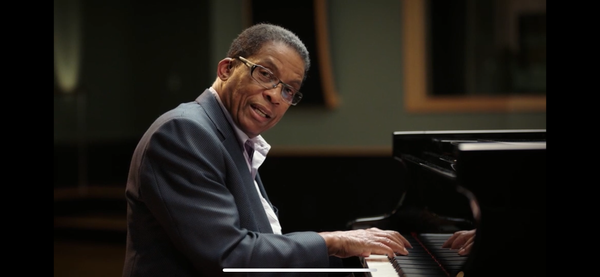Improving retention gets you more views for your YouTube videos. Therefore, if you want to grow your YouTube channel, you must learn how to interpret them and learn from retention graphs.
— Dabi (Dr David Liu) (@dabidoYT) June 25, 2023
So, here is my in-depth excerpt from my NEWLY UPDATED course 'YouTube Storytelling: Beyond… pic.twitter.com/QAntdSNMAm
This is an excerpt from my course 'YouTube Storytelling: Far Beyond Retention', which teaches you the storytelling strategies I've used to help YouTubers make 1M+ view videos.
How to interpret retention graphs
Here is my personal approach to understanding the retention graph. It’s an incredibly useful tool for improving your videos, because I believe it is the single best quantitative tool for understanding how audiences objectively react to your content.

Many may think of graphs in terms of dips and spikes, but I want to give you a re-conceptualised approach that that I feel makes retention graphs much more useful. By the end of this article, you'll see exactly what I mean!
Quick summary

It’s often better to observe the gradient of individual segments. The reason I prefer this is because gradients are always relative to each other (meaning that you don't have to worry about a lot of the complexity that comes with interpreting it), and that they are better for understanding how a particular segment is actually performing than spikes or dips.
In the above example, you can see that the segment in red is performing significantly less well than the segments in green. A steeper gradient means more people are choosing to leave.

But how can we get more precise with this?
The gradient is equal to change in % of viewers divided bytime. The simple way I do this is to take a screenshot, paste it into a tool like Photoshop or Figma or Sketch, and then calculate vertical pixels divided by horizontal pixels.
Of course, if you don’t really care about precision as much, that’s totally okay. A rougher way to do it is draw straighter lines that seem to broadly match the start and end of segments, which is a lot quicker in practice. However, typically above a certain number of views, they may not be as easy to catch.
- A steep downwards gradient means lots of people are dropping off at once.
- A shallow downwards gradient means people are dropping off, but slowly.
- Gradients are often harder to appreciate than sharp spikes or dips, so it’s important to actually do this.
A quick note on if you want to be super precise
However, if you care a lot about precision, then boy do I have great news for you. You can download the .csv of the retention graph.

No matter how long your video is, this will always be divided into 100 points, displaying the % of remaining audience at each of those points.
This has one rather important consequence. I first noticed this when I was getting a whacky 95% retention on my 2-hour long video for the first 0:30. I'm pretty good at storytelling, but not that good! I realized with the help of other strategist friends that it was because the 120 minutes was divided into 100 points. That meant that the percentages were only calculated every 1.2 minutes!
Spikes, Flats, and Dips

Spikes

- A spike is where the curve goes up, meaning viewers have come back to watch this segment. This does not necessarily mean “do more of this” in the video.
- Bad reasons for spikes:
- In a bad scenario, it can mean that that viewers are confused and need to rewatch a segment.
- Another scenario is that viewers are skipping ahead to that spot, meaning they’re ignoring the segment before it.
- This is especially common in videos with chapters, where viewers just skip to the beginning of each chapter.
- This also happens after sponsorship segments, when viewers skip a sponsorship that hasn’t been integrated well with the content (i.e. most traditional sponsorship plugs).
- Good reasons for spikes:
- It could mean that something was so cool and clutch that viewers felt compared to rewatch it.
- So ultimately, spikes need to be interpreted in the context of what’s happening in the script at that particular time.
Flats

Horizontal segments where the steepness of the graph is less than usual. This indicates that people are engaged and staying for this section. It’s captured their attention.
Keep in mind that how good this is needs context. Explained more simply: just because someone is watching in a particular segment, does not mean they necessarily enjoy the video. It just means they’re waiting to resolve whatever question they have on their mind about what’s going to happen in your video. So if there’s a big dip after a flat, it means that you held attention — but people didn’t like the segment.
Dips

When a graph is steeper than usual across a section, it means that that section isn’t holding people’s attention.
I would like to re-iterate a previous point: these steeper segments are not always so obvious. Look for subtle changes in gradient. YouTubers very often miss these, thinking they’re nice and flat, but actually these segments are bad. I find a very useful exercise is to draw individual straight lines using a graphic design software, and if a line doesn’t quite match up and you have to draw another line to make it fit the retention curve, then you’ve got a change in gradient.

Post-segmentation dips (also known as segmentation loss)
In my work as a doctor, an interesting phenomenon that often happens is that when someone has a problem in a nerve, they don’t feel it where the nerve is pressing. They feel it at the place the nerve is innervating. A herniated disc is the classic example, where someone can feel pain in their leg from something that’s happening in the lower back.
So I was surprised to see this concept in one of the great editing books, In The Blink Of An Eye.
They gave an example where test screenings were done to see how people liked a movie, and often, those people hated the same parts of the movie that they were tested on.
But when the authors really looked into it, the part that audiences hated wasn’t actually the part that was bad. It was everything that led up to that part that caused it to fall apart.
So instead of changing the part itself — the equivalent of avoiding saying certain things right before a dip in a YouTube video — they changed the things that led up to that part.
Applied to YouTube retention chart analysis, a big dip after a segment can signal that the segment before the dip was bad. Not just what’s said right before the dip.
A post-segmentation dip is the psychological equivalent of “okay, got through that bit and that was boring, I’ve watched enough of this.”
Shapes
Of course, there are more specific shapes that mean different things.
For example, a massive drop-off right at the start of the video that’s more than expected, followed by a flatter segment, means that that first part is just wasting the viewer’s time:

And here’s a few common shapes you might have experienced already, like huge “U” shaped dips for sponsorship, but these are super obvious:

Subscribers and non-subscribers retention
The Subscribers and non-subscribers .csv reflects the fact that you can separate these two groups in YT Studio as well. You might want to do this is you’re trying to understand how your video affects your non-core audience (e.g. new audiences) as opposed to those who are loyal to your channel. It’s reasonably advanced and I’m sure some channels may gain great value from that — but in practice, personally I haven’t felt the need to separate it out too often, since it adds another layer of analytics effort required when you’ve already got tonnes of stuff to digest from a video.

And now that you’re here, you’ll never miss it!
From here, how do you improve retention?
Now that you know how to diagnose retention issues…how do you improdve it?
- Improving scriptwriting
- Improve presentation
- Improve editing
The simple answer is: experiment and continue to learn both from data and learn from other people.
A shortcut to scriptwriting, editing, and storytelling
I’ve helped many YouTubers get millions of views on their videos, taking principles from working and analysing a ridiculous number of videos and working on many YouTuber’s channels, from 1K subs to 5M subs. It turns out that there is a huge amount of depth to that, so I’ve made a course called Storytelling: Far Beyond Retention to try to capture that depth is a way that’s distilled down for anyone to use.
I’ve taken great care to make it one of the best courses on YouTube storytelling that exists. It’s suitable for both beginner and advanced YouTubers, but in general I’ve leaned towards the more advanced side. And it’d be great to see you there!

That said, I also have a FREE 5-day email course you can take called The YouTube Storytelling Primer. Feel free to check that out first.
“Wait, promoting your own course sounds biased! Is there any other way?”
There are two other courses from other YouTube strategists which I’ve personally done and I can vouch for.Below are affiliate links (i.e. if you purchase their courses, I’ll receive a percentage of the sale) — but I’m only putting them here because I both know them personally and genuinely believe what they teach is extremely useful for YouTubers.
- Mario Joos was the retention director that was a huge part of helping the MrBeast team for many years. He has a course/accelerator that is literally all about retention principles and strategies, called Million View Club.
- George Blackman has done scriptwriting for Ali Abdaal, Mike Shake, and many others. He has a very systematic approach to scriptwriting whilst keeping a holistic view of it, and his main course/community is the YouTube Scriptwriter’s Playbook (YTSP).





